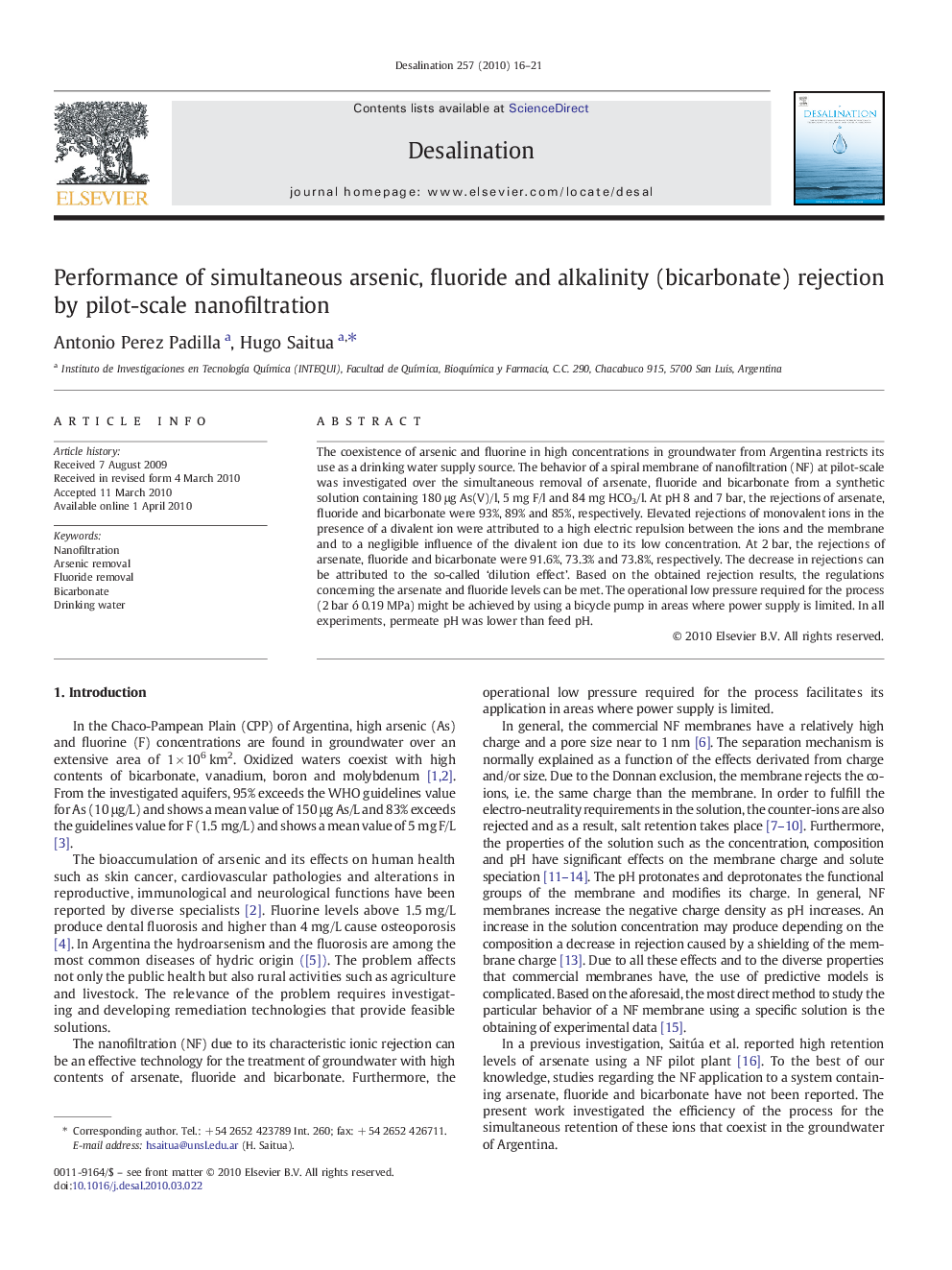| Article ID | Journal | Published Year | Pages | File Type |
|---|---|---|---|---|
| 625717 | Desalination | 2010 | 6 Pages |
The coexistence of arsenic and fluorine in high concentrations in groundwater from Argentina restricts its use as a drinking water supply source. The behavior of a spiral membrane of nanofiltration (NF) at pilot-scale was investigated over the simultaneous removal of arsenate, fluoride and bicarbonate from a synthetic solution containing 180 μg As(V)/l, 5 mg F/l and 84 mg HCO3/l. At pH 8 and 7 bar, the rejections of arsenate, fluoride and bicarbonate were 93%, 89% and 85%, respectively. Elevated rejections of monovalent ions in the presence of a divalent ion were attributed to a high electric repulsion between the ions and the membrane and to a negligible influence of the divalent ion due to its low concentration. At 2 bar, the rejections of arsenate, fluoride and bicarbonate were 91.6%, 73.3% and 73.8%, respectively. The decrease in rejections can be attributed to the so-called ‘dilution effect’. Based on the obtained rejection results, the regulations concerning the arsenate and fluoride levels can be met. The operational low pressure required for the process (2 bar ó 0.19 MPa) might be achieved by using a bicycle pump in areas where power supply is limited. In all experiments, permeate pH was lower than feed pH.
